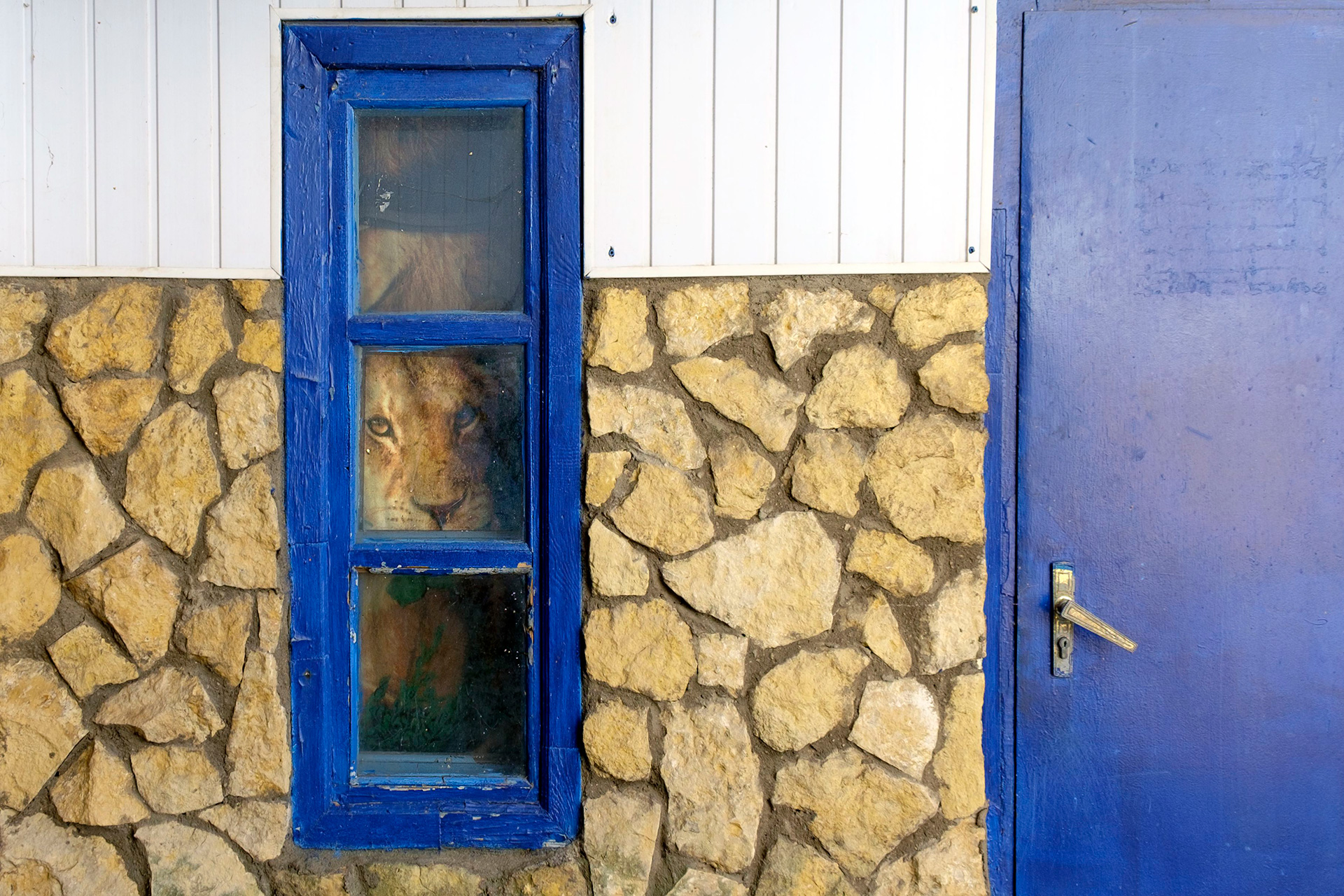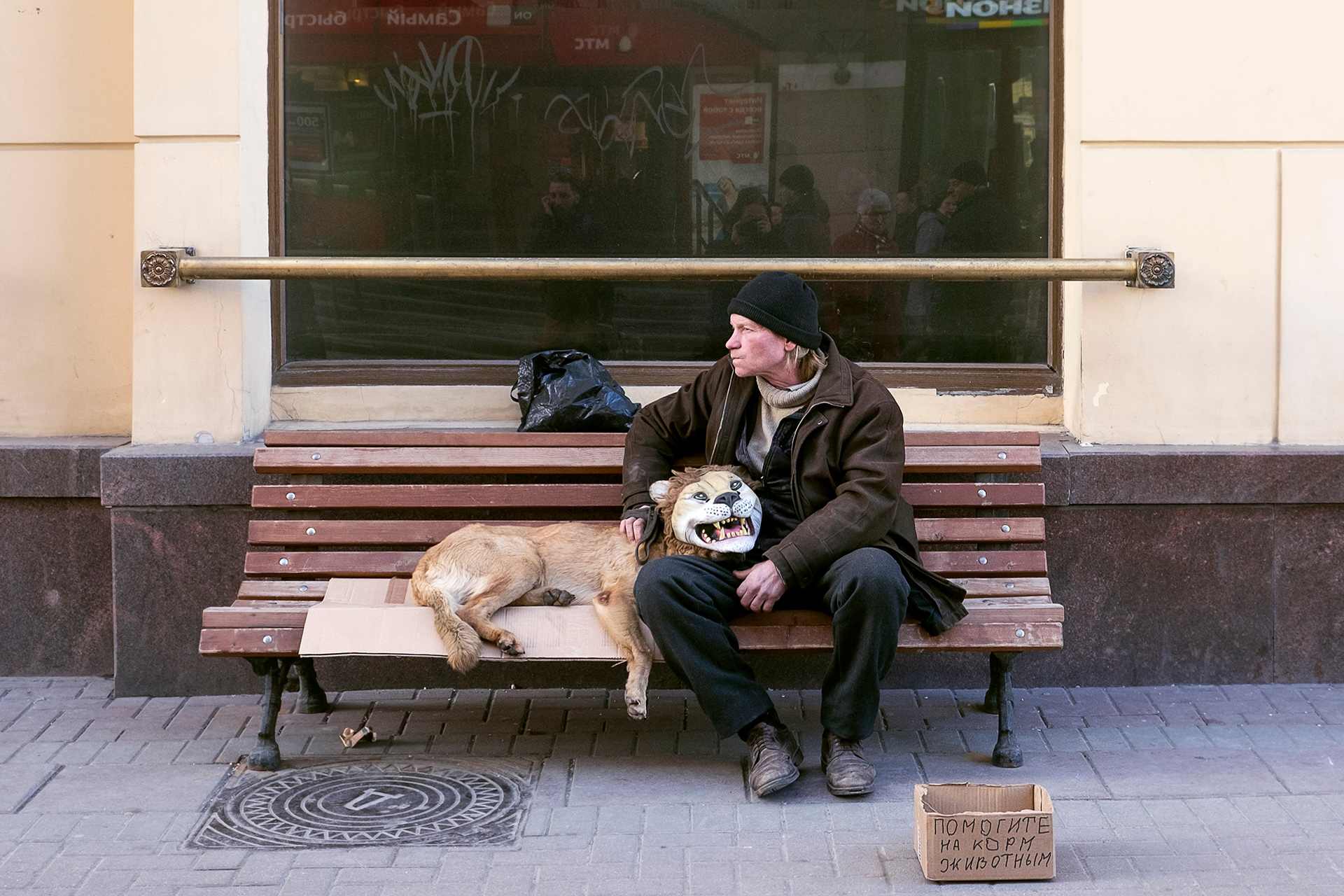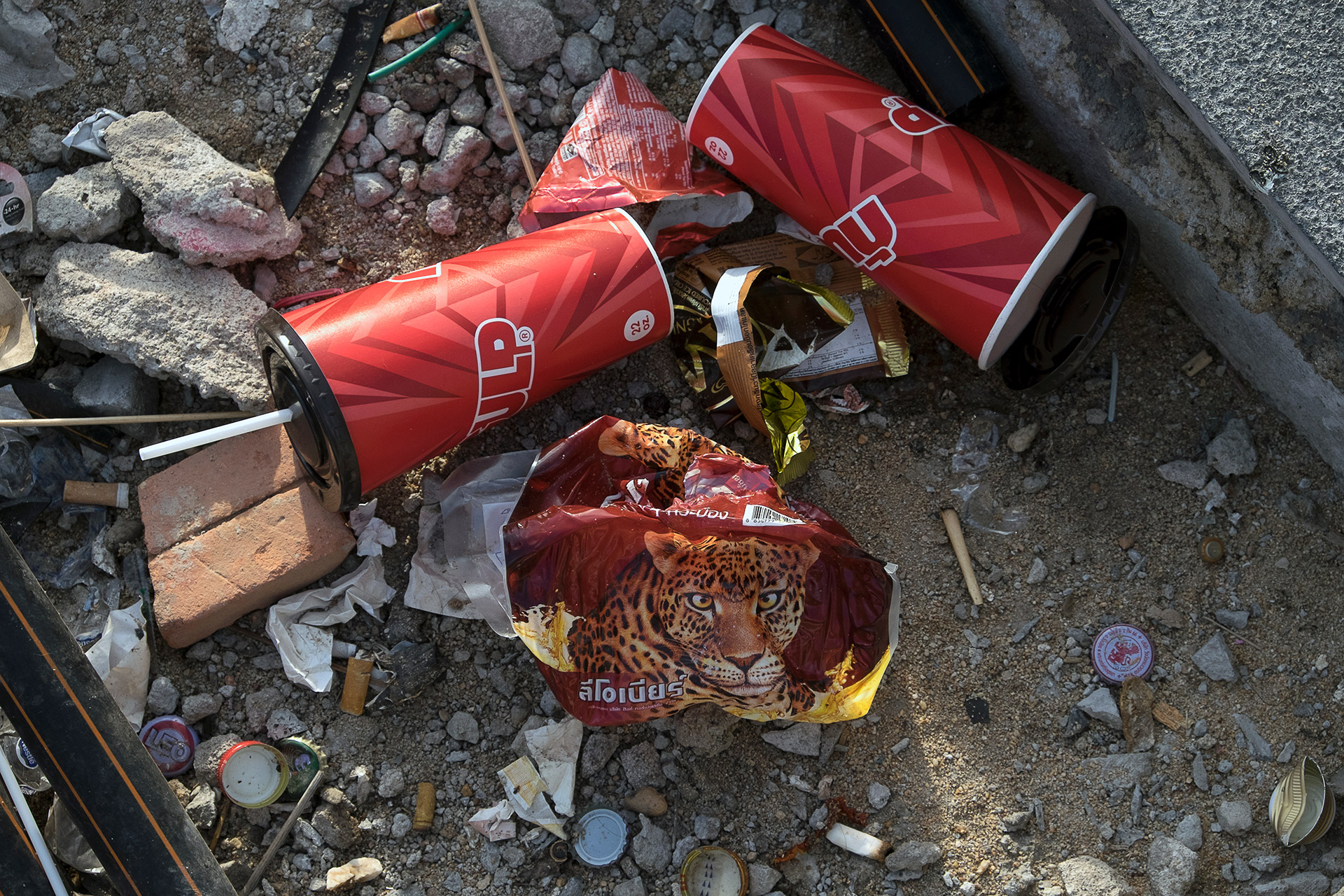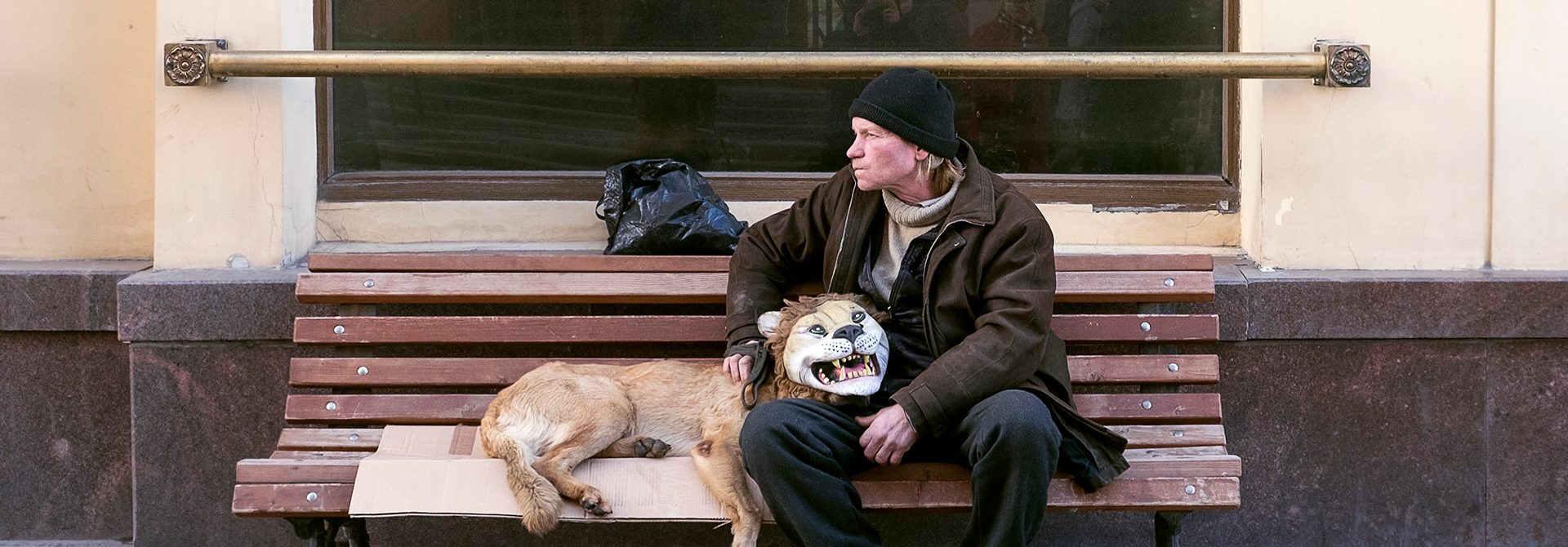
Cats in Town: Olga Titova’s Pride Series
“Once upon a time a mystic pride was noticed roaming across the valleys of the north – and then got lost among us. It has been secretly living here since then, but one day it will be gone forever.” This paragraph opens Olga Titova’s photo book, Pride. The book received awards at Russian and international photo contests.

Moscow-based street photographer, winner of Miami Street Photography contest and Urban Street Awards. Her photo book, Pride, was shortlisted at PhotoBookFest, Fuam Dummy Book Awards, ViennaPhotoBookAward festivals.
— I was wandering around Tver looking for something to shoot, when a half-ripped poster on a freshly painted green fence caught my eye. It seemed to me that the leopard from that poster was looking right at me. “My God, it is alive, and it is following me from some other world,” I thought. And took a picture of it — the leopard was impossible to walk past, it was asking to be captured. After that, I started noticing other carnivores surrounding me or roaming by me. I started seeing them everywhere.
This is how the series started coming along, where the carnivores seemed alive, and the city turned into their natural habitat. While working on the series, I saw a scene from Paul Verhoeven’s Total Recall in my mind, where the agent (played by Schwarzenegger) finds a mutated baby-sized leader of the Martian rebels in the belly of one of the other characters. The mutant leader is also the focus there, and a human nothing but a storage container.
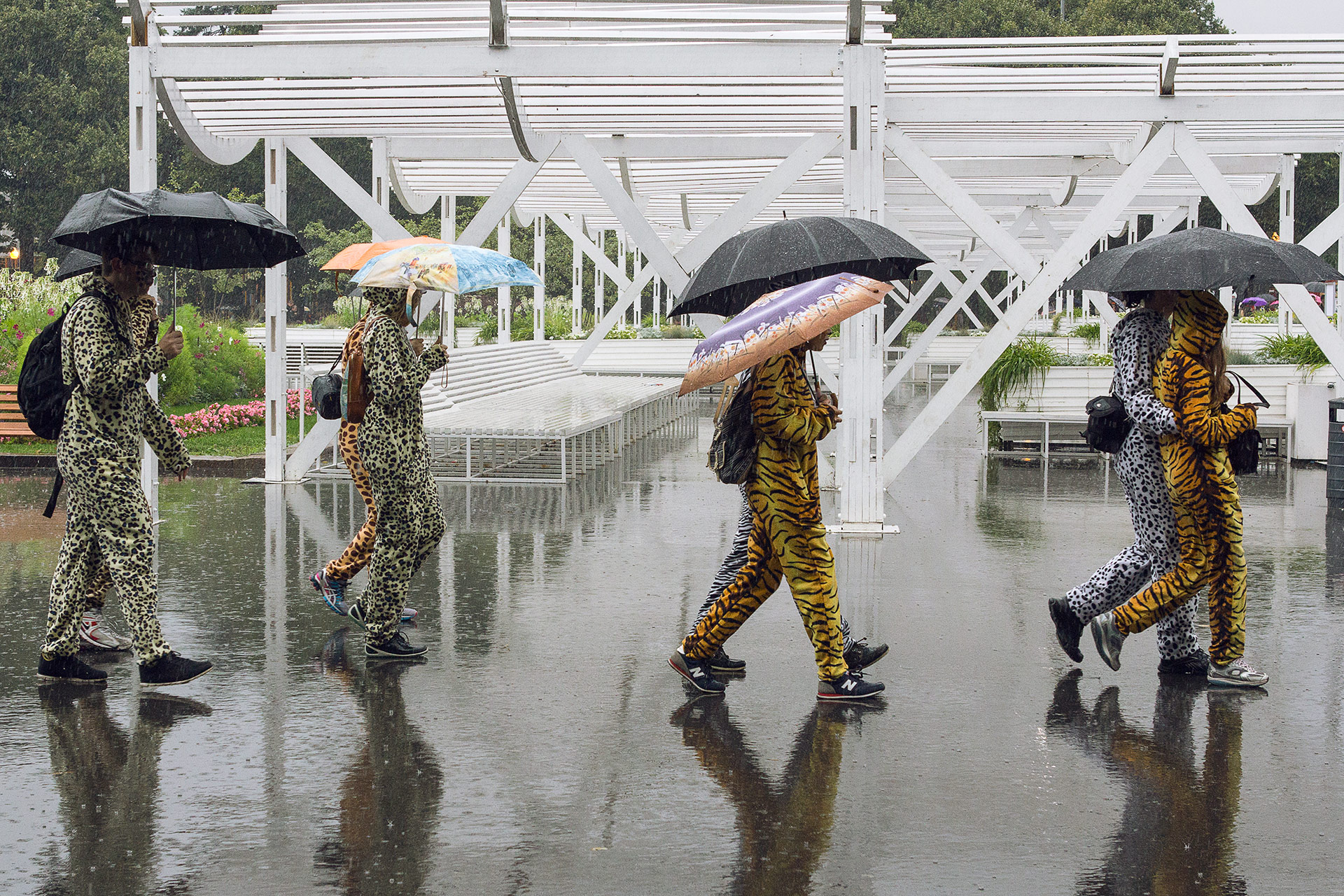
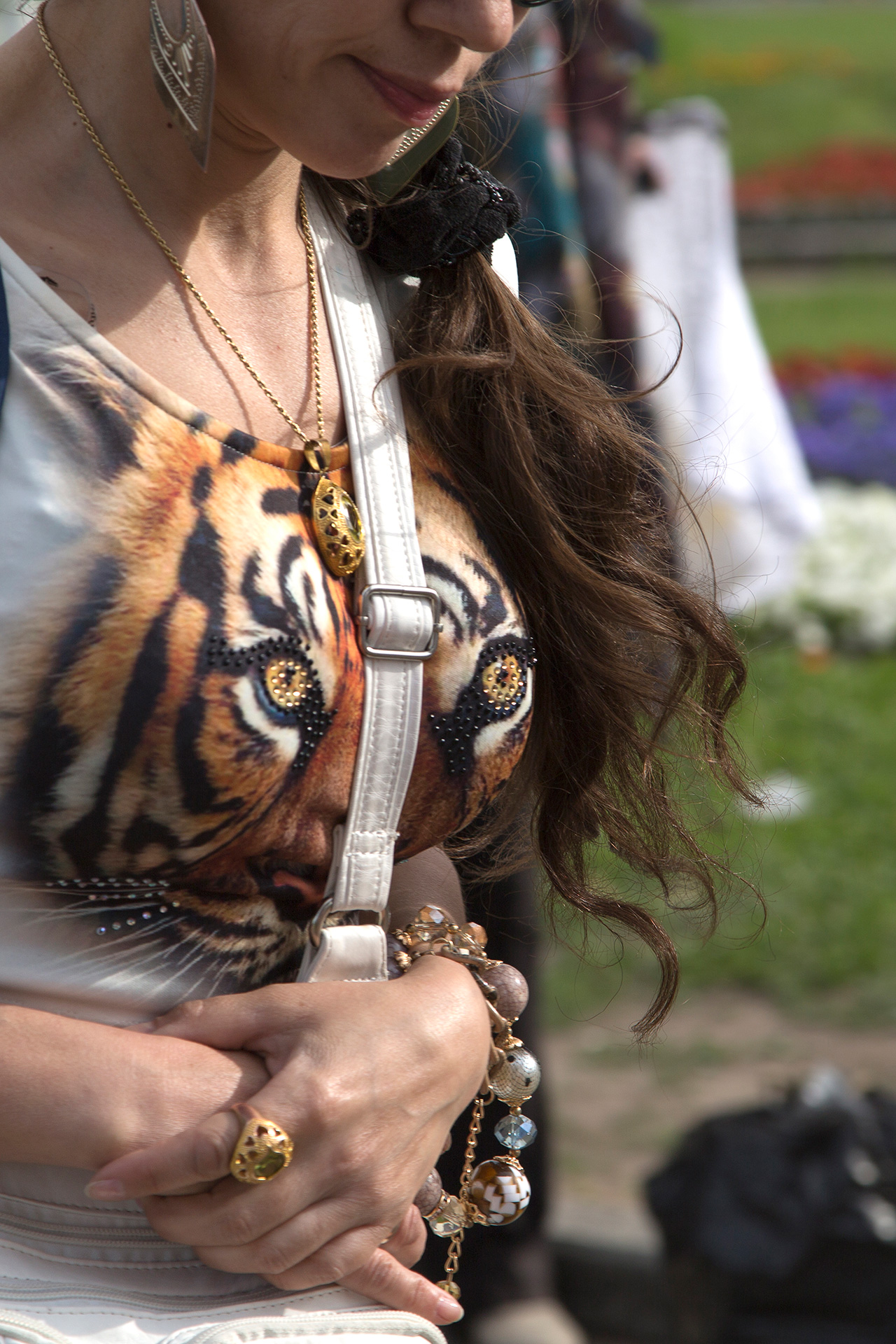
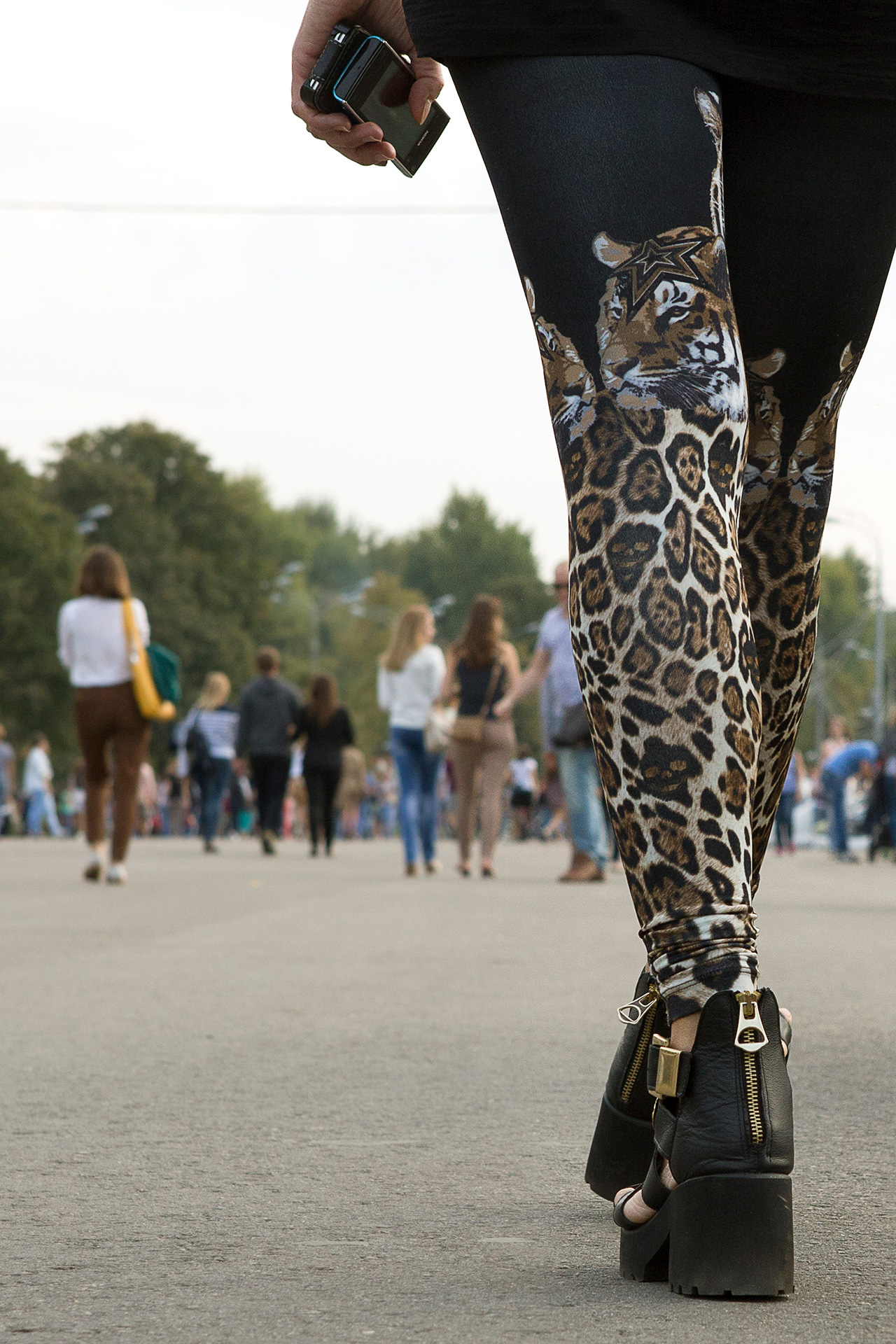
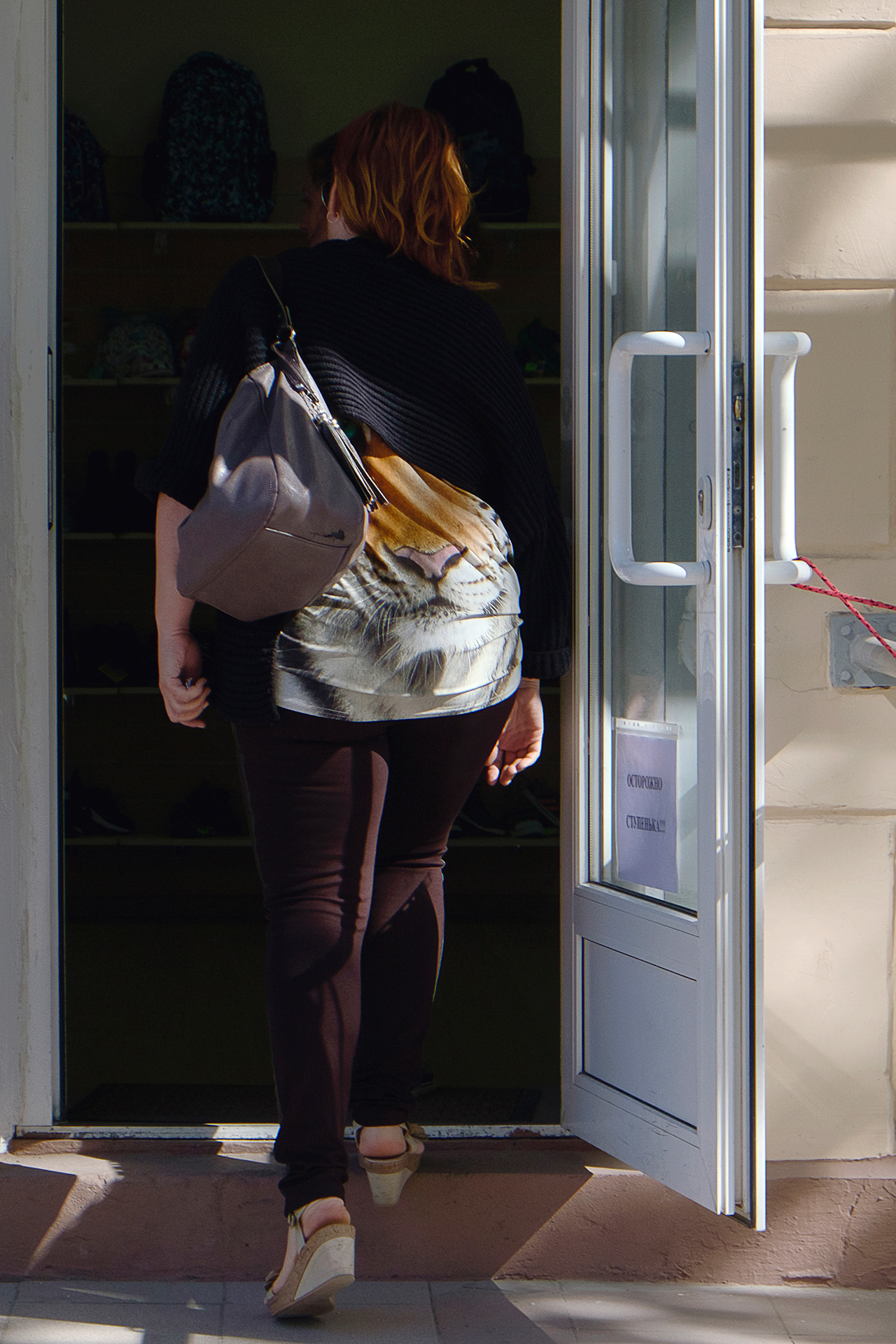
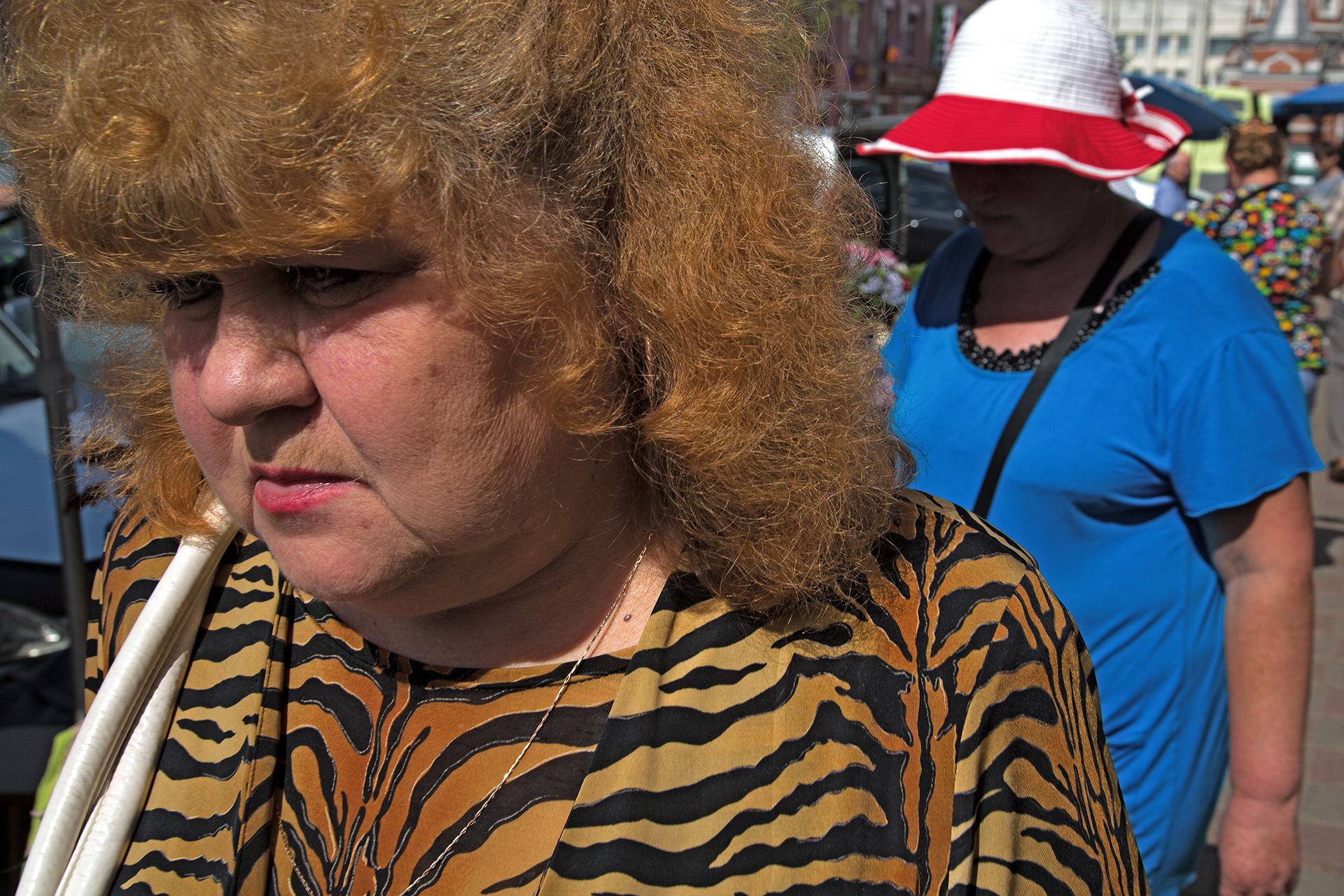
The most difficult aspect of this approach was not to resort to judgement, not to look down on my characters. I was trying to keep irony in check, so that it wouldn’t turn into snobbishness, didn’t allow myself to show the unattractive sides of my characters — for instance, I didn’t capture things like a woman bending down awkwardly and looking funny. This is not the way to do things, you need to have respect for people.
I didn’t have any problem finding stories. As soon as I found the theme, animals started literally following me. It was funny. One time, my mom asked me to buy a carpet for our country house. I went to Auchan, found the department I needed, and asked the salesperson to show me some cheap carpet. He got all excited: “We got one especially for you. It’s just great, and it’s inexpensive, and it looks amazing,” and brought me up to a stand with a carpet with a full-length tiger’s snout on it. That was how I took another picture that was later included in the book. Or, I was standing in Gorky Park with a friend, and I am telling her about the book, and I have the camera on my shoulder. It is bitterly cold, it is raining, and the park is half-empty. It was about four in the afternoon, when there is usually nobody around. And then, out of the blue, a group dressed in costumes with animal prints turns up, and slowly moves right by us.
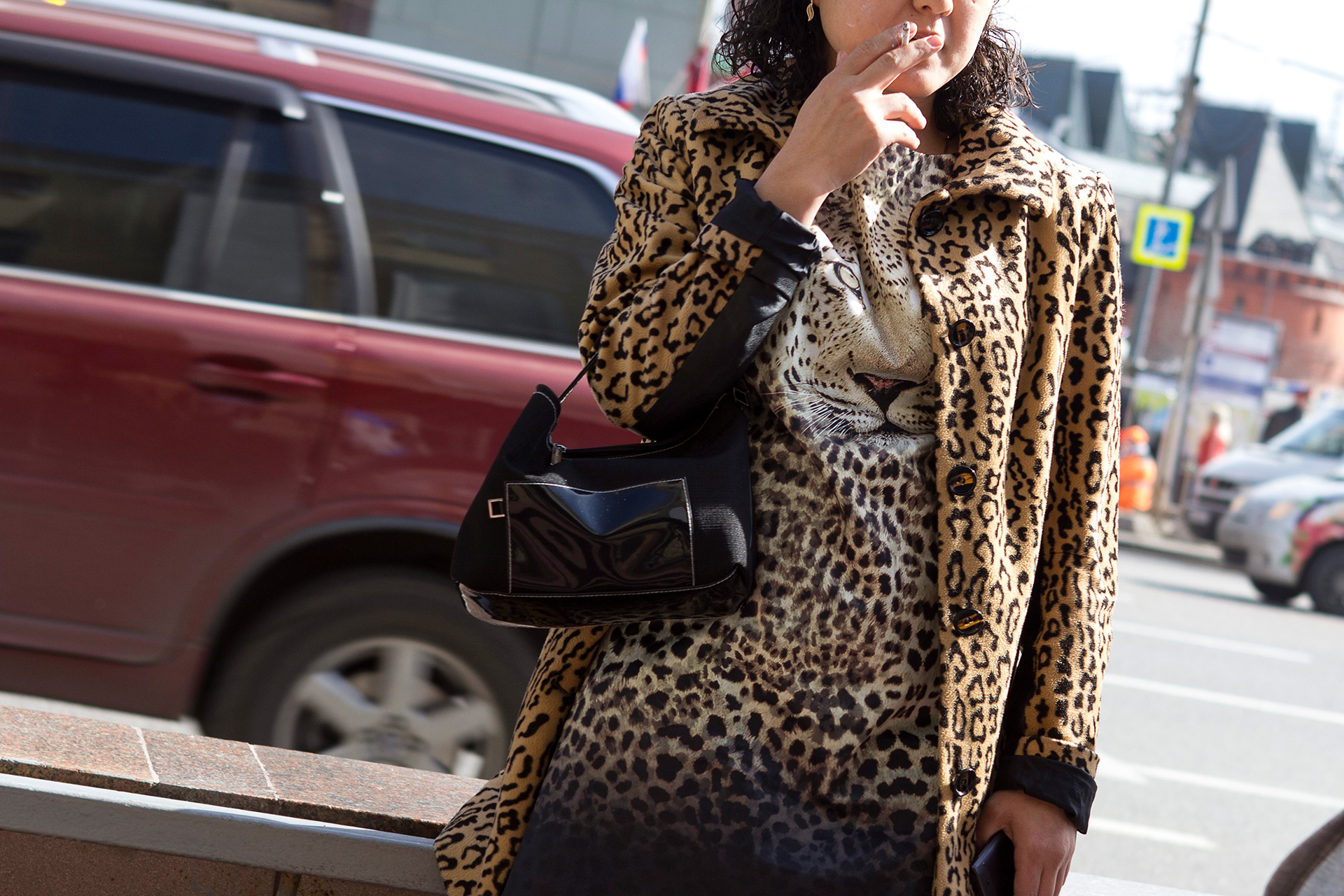
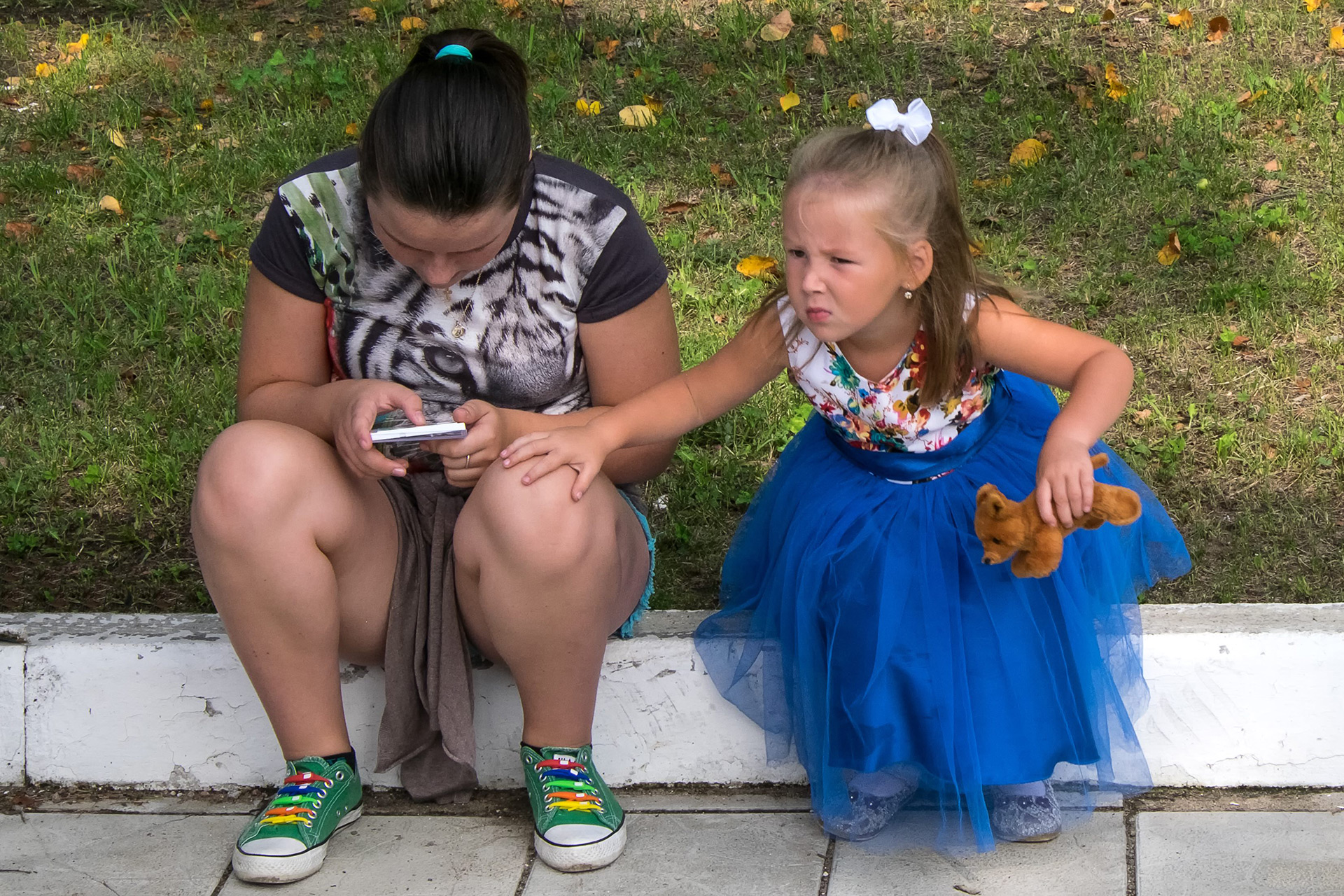
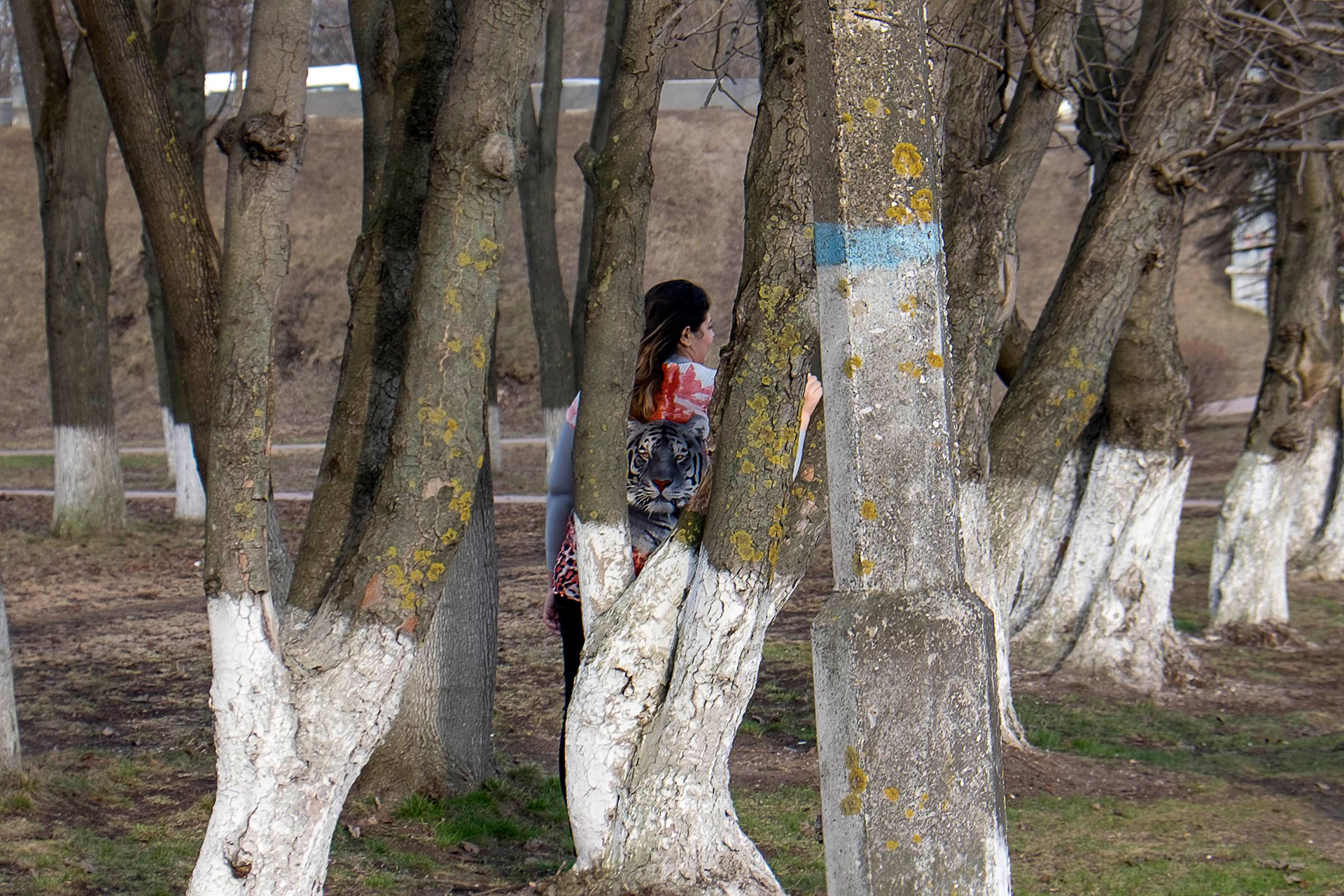
Working on this project, I tried to find an answer to the question why people wear leggings or a coat with leopard print, images of lions and tigers all over the front? I thought: “Maybe this is a childhood thing, and this person as a child had their aesthetic preferences formed when they watched cartoons about animals in Africa. That’s why the first version of the book was dedicated to Africa and how to travel to this continent without leaving central Russia. It has many pictures of trees that resemble palm trees, fantasy shadows, textures and such things. It was my safari on an imaginary continent. However, deep inside I wasn’t satisfied with this story, it seemed artificial. I put it aside and looked through all the material once again. This was how I came up with the idea of a pride that got lost in central Russia, and my question about where it came from remained unanswered.
I captured almost all the images in Moscow, Tver, Vyshny Volochek, and other cities and towns of central Russia. For instance, a sad man with a dog was sitting in Arbat. A second after I took the picture, he ripped the muzzle off the dog and yelled at me. “Don’t scream, I took a good picture,” I said and gave him 50 roubles. He calmed down a bit, put the muzzle back on the dog, and was ready to pose as long as I needed. But posing is not quite what I was looking for.
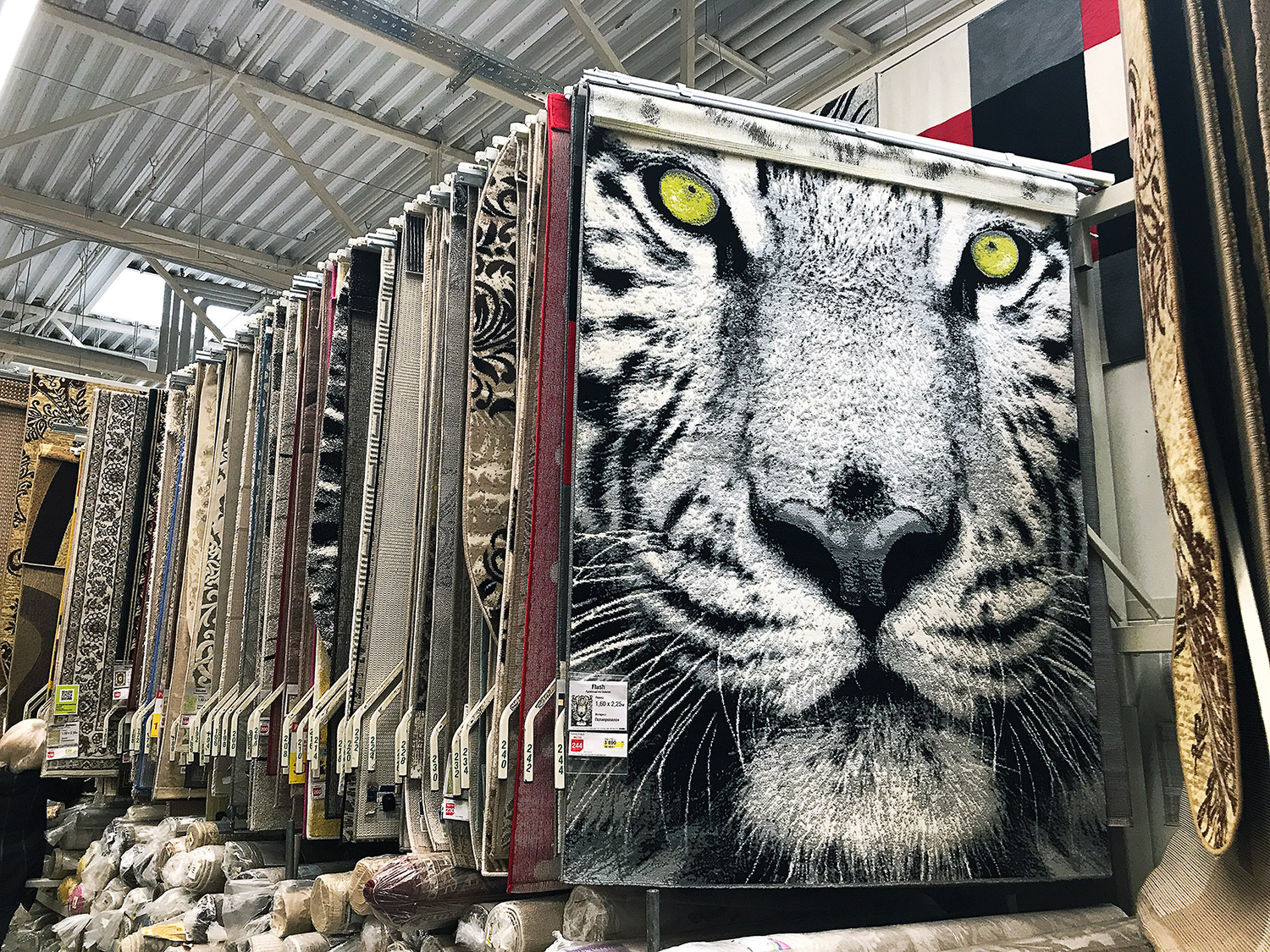
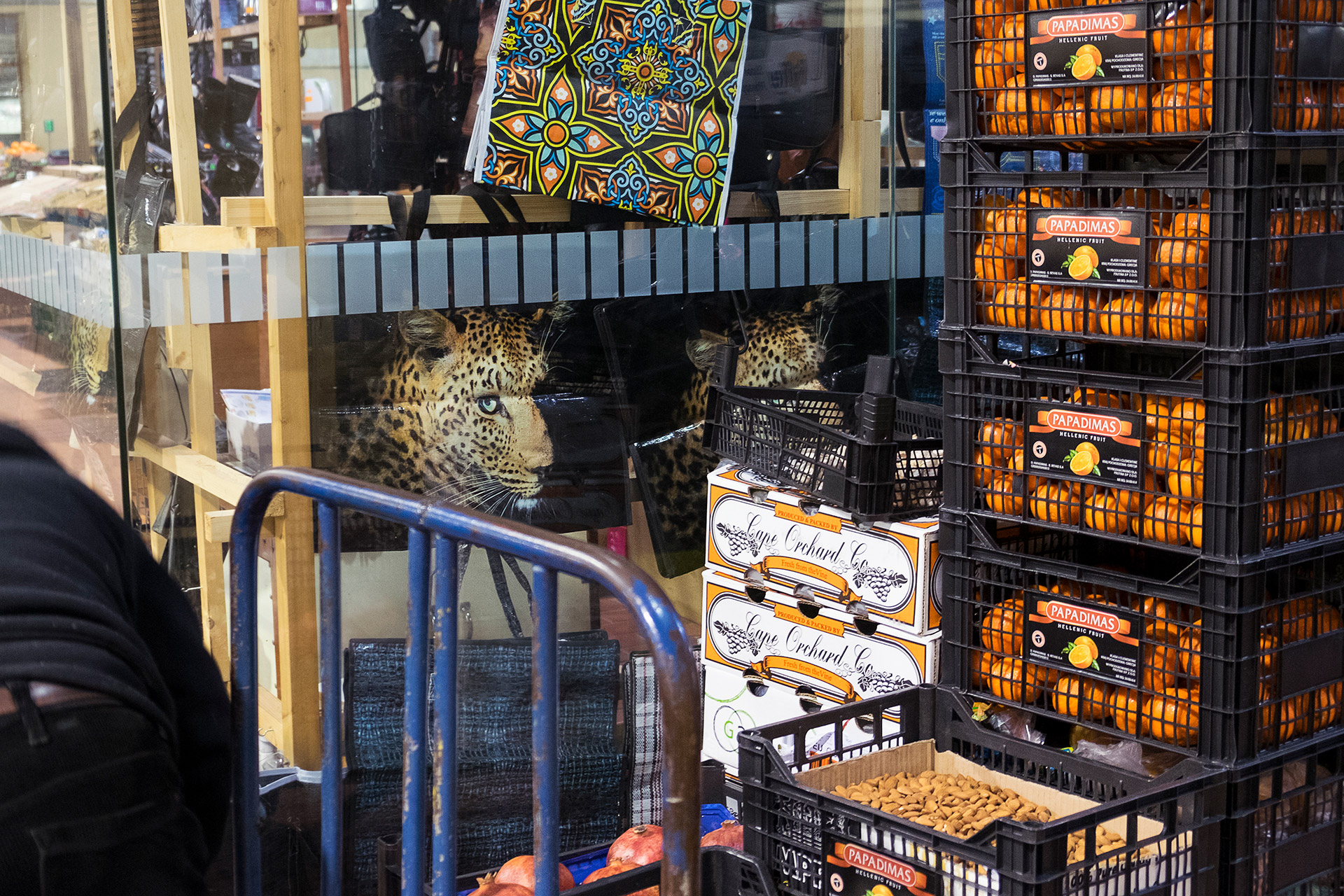
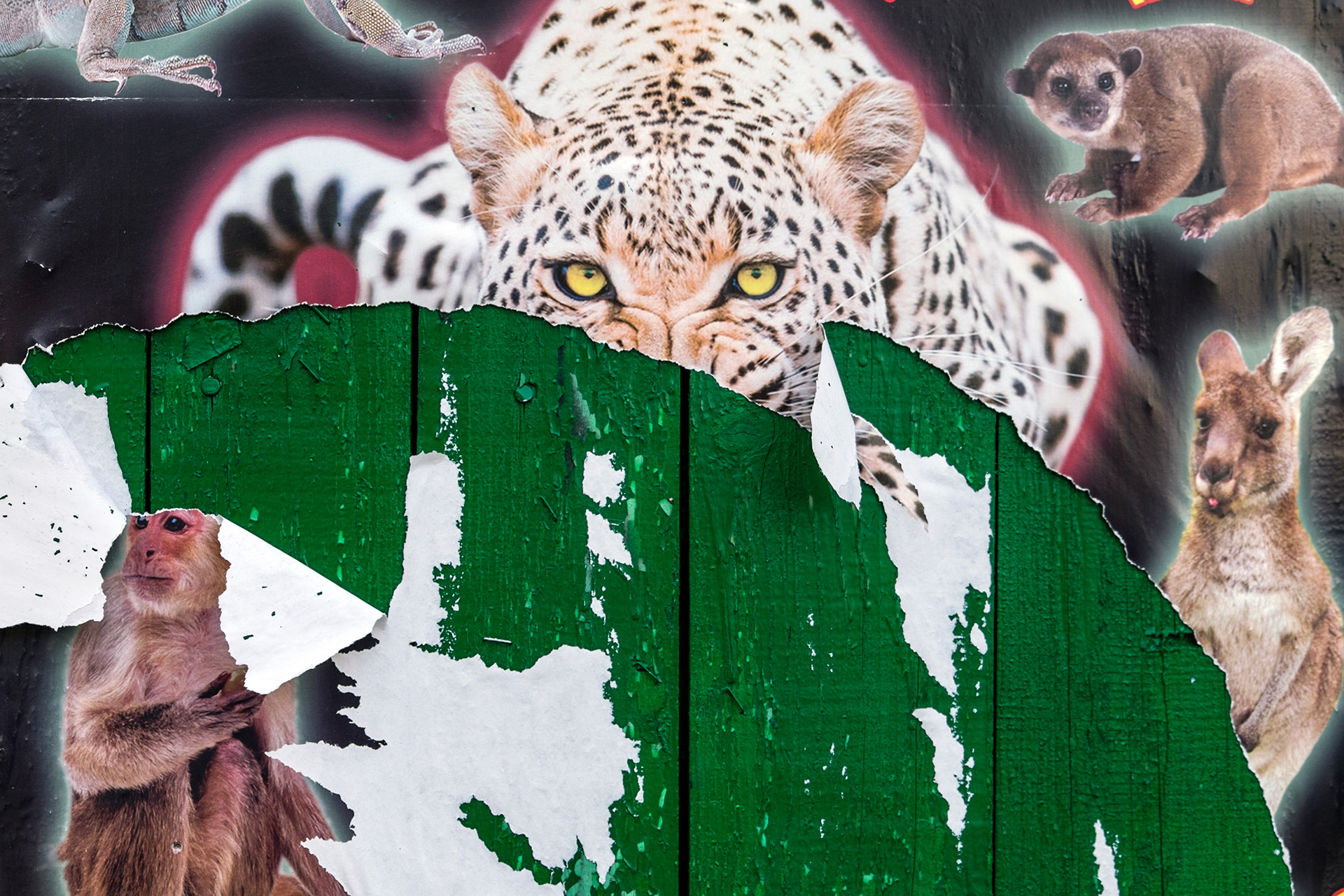
This theme turned out to be quite contagious. All the people who found out about my project immediately started seeing lions and tigers and sending their pictures to me — it would have been enough for a second book. Now, I am trying to hide from the pride and I am thinking about how to get rid of these animals.
